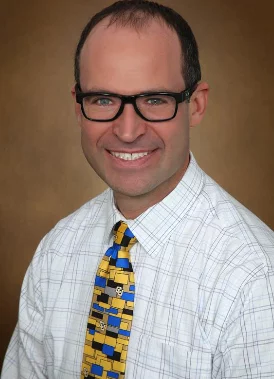
Exceptional determination, drive, cardiovascular capacity, and pain tolerance count among the qualities shared by elite Nordic ski racers. The ability to sense one’s feet doesn’t typically make the list.
Brianna Rickert typically perceived her feet as most of us do – as fully sensate, if occasionally sore, bodily appendages. But in early 2021, Rickert’s feet started going numb and causing serious pain every time she exercised.
Rickert, then 19, exercised a lot. The Gunnison resident and Western Colorado University student had for years counted among the country’s top youth Nordic ski racers, and she excelled at the intercollegiate level. Now she couldn’t train without debilitating pain.

Her symptoms pointed to a problem that can happen among endurance athletes: chronic exertional compartment syndrome, in which robust calf muscles get squeezed by the fascia surrounding them. But Rickert had already had surgery for that a couple of years earlier, and there was no sign of it now. Visits to orthopedic and vascular specialists, MRIs and other tests brought no clarity. While blood-flow problems were the suspected culprit, the standard test, called the ankle brachial index, or ABI, came back normal.
Doctors told her the only way to fix the problem was to stop exercising.
“Basically, they said, ‘You can’t run or ski anymore or else you’re going to have pain,’” Rickert recalled. “So that was super heartbreaking.”
Brianna’s mom Holly, a nurse in Gunnison, wasn’t about to let that be the final say.
“That’s when my mama-bear took over. I didn’t think that was good enough,” Holly said.
Muscled out: a case of dorsalis pedis artery entrapment

An online search led her to the story of a high school cross-country runner in Denver with similar symptoms. Doctors at UCHealth University of Colorado Hospital on the Anschutz Medical Campus (UCH) had diagnosed a rare case of dorsalis pedis artery entrapment. When she exercised, the artery got pinched between the bone and muscle tendon, stopping blood from flowing to the foot and causing numbness and pain. Surgery had corrected the problem.
Holly reached out to University of Colorado School of Medicine vascular surgeon Dr. Max Wohlauer. Soon mother and daughter drove the four-plus hours to Aurora, where Wohlauer and colleagues had planned a day for testing and diagnosis at UCH.
The key test involved UCHealth vascular technologist Rebecca Swanbom performing a focused, duplex ultrasound below Rickert’s ankles. The ankle brachial test, in contrast, checks blood flow above the ankle. Swanbom had Rickert extend and flex her ankle; when Rickert plantarflexed – that is, pushed her foot down and away from her body as happens when running or Nordic skiing – the blood flow ceased, Swanbom saw. The culprits, she suspected, were the extensor hallucis longus muscles on either foot that, like many of Rickert’s muscles, had grown large through heavy training. Wohlauer came in to confirm, and indeed: another case of dorsalis pedis artery entrapment.
Wohlauer and Dr. Jason Stoneback, an orthopedic trauma specialist and director of the UCHealth Limb Restoration Program, plotted out a surgical plan. They would operate on the right ankle, wait four weeks, and then do the left. They scheduled the first surgery for June and the second for July, the aim being to get Rickert back on her skis for 2021-2022 Nordic season starting in November.
The surgeries both involved removing some of the muscle fibers from Rickert’s extensor hallucis longus muscles, which Wohlauer says extended further down the ankle than is the case with many patients. The surgeons plantarflexed the foot as the procedure happened to make sure blood kept flowing. The second surgery on the left foot also involved trimming a bit of tendon sheath.
Surgery alleviates foot numbness and pain
Rickert spent much of her late summer crutching around in casts and walking boots, but by October she was cleared to train. Despite having missed dryland training in the summer and fall, she had what she called “a great season, which was awesome coming off this.”
The capstone to that season, in March 2022, came during the collegiate Nordic national championships. Rickert won the 7.5-kilometer race. Eight months after the second surgery, she was a national champ.
More importantly, she was able to do what she wanted to do.
“This could have been a disabling condition, one that limited her mobility and her quality of life,” Wohlauer said.
A year later, Rickert is doing something different – if no less rigorous. She’s transitioned to ski mountaineering, a.k.a. skimo, a sport whose races involve steep uphill climbs and speedy descents.
“I think I just got to the point of wanting a little bit of change,” Rickert said “I got a little burned out on Nordic, and then skimo also has a lot more postgraduate professional opportunities.”

She’s hedging her professional bets. Now in her third year at Western Colorado University, Rickert is studying education and aiming for a master’s degree when she wraps up her undergraduate work. She wants to be an elementary-school teacher, she says.
Oh, and she’s also a competitive trail runner, having been sponsored with Western Colorado University teammates to compete in Adidas Terrex Infinite Trails in Austria last summer.
Rickert says she’s grateful for the efforts of Wohlauer, Stoneback, and colleagues for getting her back to what she loves to do.
“From our very first appointment, it all unfolded better than I ever could have expected,” she said. “Especially after being deflated and just not knowing what was wrong.”
“She was at the point where she was really starting to hit her stride, and then she got sidelined by this condition,” Wohlauer said. “Now, she’s thriving. She’s got a whole career ahead of her, and she’s just getting started.”
